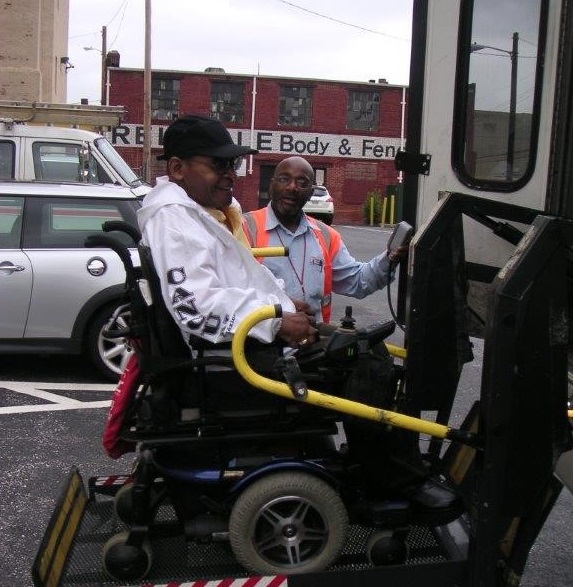Crisis Facing Riders of MTA Mobility Service
May 31, 2019 Disability Rights Maryland (DRM), the Congressional mandated protection and advocacy system for the state, as well as Consumers for Accessible Ride Services (CARS), a self-advocacy group, are demanding an emergency response from Governor Hogan to the crisis facing disabled riders of MTA’s Mobility Service. These riders have no other forms of transportation. DRM is requesting an emergency plan to be put in place to address the harms caused by MTA’s failing service, as it is endangering the lives of the riders it is supposed to serve. Individuals with disabilities, such as Will Fields, had to wait for as long as four hours for his ride, outdoors and exposed to the elements while in an electric wheelchair. Other riders, such as Anitra Swann, was left stranded at work and forced to wait for hours, in an insecure location. She finally had to pay for a taxicab when her ride never showed, and was unable to take her motorized wheelchair with her.
Riders have been stranded at dialysis appointments for as much as four hours, and have even had to miss full treatments or portions of treatments due to MTA’s Mobility service failure. This has put them at risk for removal from the kidney transplant list. Once picked up, some riders are on MTA Mobility vehicles for hours due to system shortages of drivers and vehicles. During these long rides, people have been unable to eat or take medications, and are unable to use the facilities–exacerbating their disabilities. Some riders have just come from dialysis treatments and may be weak and ill due to not eating.
Other individuals rely on personal care aides to support them in activities of daily living, such as transferring from a wheelchair, preparing a meal, bathing, etc. Others need vital assistance such as oxygen treatments and suctioning. However, by the time they get home after delays in para transit service, their aides have left due to their shifts ending. Riders have reported missing work, job loss or risk of financial loss, missing religious events, and countless other hardships due to significant delays and no-shows by MTA Mobility.
At times, when attempting to call about their late rides, riders experience busy signals, are disconnected or must wait on hold for periods of time beyond that permitted under law. Riders also report that when they get a response to their late line call, they are frequently told that a ride is coming at a specific time, but it does not show.
Two years ago, Disability Rights Maryland, along with the AARP Foundation Litigation, settled a lawsuit against MTA for egregiously long telephone hold times and a flawed eligibility process resulting in denials of service to qualified individuals with disabilities. Significant issues with the service are once again apparent.
Among the action items DRM is calling for in an emergency action plan are for MTA to:
- Contract with taxi companies to provide immediate service and offer relief to those para transit riders who can use taxi services
- Obtain small accessible vehicles for use on a temporary or emergency basis while the system develops sufficient capacity
- Establish a relationship with 311 and 911 so that those dispatch services can have an emergency contact within MTA Mobility for responding to emergencies such as no-shows, stranded in dangerous conditions, being disconnected from the late line and not getting through, etc.
- Immediately remove the limit (
- two trips per day) on trips for individuals who can use Call A Ride, a supplemental system to para transit using local taxi companies
- Retain services of an independent para transit expert to assist MTA in providing service compliant with the Americans with Disabilities Act
- Provide additional resources to the para transit system
- Use voice mail message system for ride cancellations and halt suspension of riders for “no-shows” while the service stabilizes
- Install technology that is comparable to that used on the fixed route bus system where riders can use a phone app to identify the location of their ride
- Ensure that solicitation for para transit drivers, and training, includes a stronger focus on the human resource component of the job
- Consider having Medicaid provide more non- emergency medical transportation trips for para transit riders on Medicaid
- Improve scheduling of trips, which create significant inefficiencies

